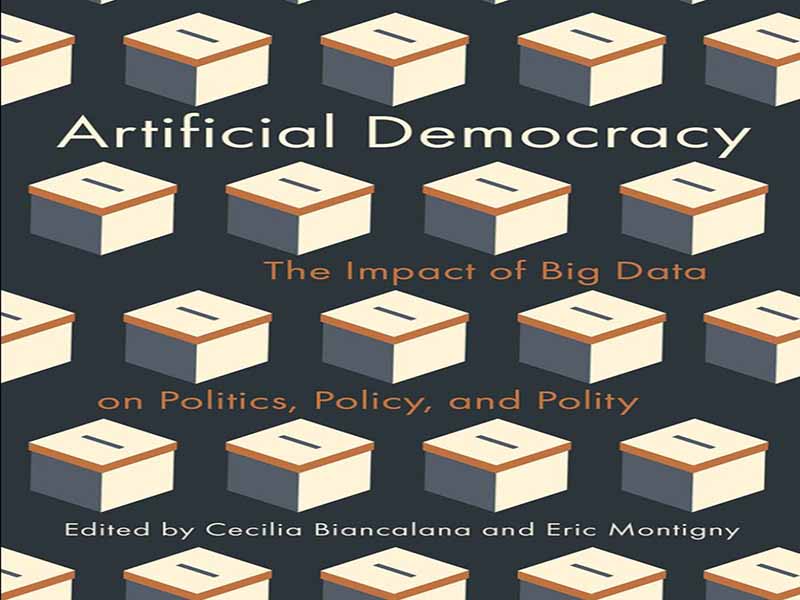این دوران، دوران سختی برای دموکراسی نمایندگی است. طبق گزارش موسسه بینالمللی دموکراسی و کمک به انتخابات (IDEA، 2022)، تقریباً نیمی از دموکراسیهای جهان اکنون در حال زوال هستند – 48 از 104 کشور. در عین حال، این سازمان مستقر در سوئد خاطرنشان میکند که رژیمهای اقتدارگرا حتی سرکوبگرتر از قبل هستند (IDEA، 2022). دادههای نظرسنجی ارزشهای جهانی 2022 (که شامل هفتاد و هفت حوزه قضایی است) نیز کاهش جذابیت دموکراسی برای شهروندان را نشان میدهد. اکنون، 52 درصد میگویند که ترجیح میدهند توسط یک رهبر قوی اداره شوند که مجبور نباشد با پارلمان یا انتخابات سر و کله بزند، که این رقم نسبت به 38 درصد در سال 2009 افزایش یافته است (DemDigest، 2022). علائم این «بحران دموکراتیک» ادعایی، اصطلاحی که از دهه ۱۹۷۰ در دموکراسیهای غربی رایج بوده است، شامل کاهش مشارکت رأیدهندگان، کاهش عضویت در احزاب، افزایش بیثباتی انتخاباتی که نشان میدهد شکافهای سنتی در حال ذوب شدن هستند، و همچنین ظهور و موفقیت احزاب جدید: ضد نظام مستقر، ضد سیستم یا پوپولیست، میشود. این پدیدهها در مجموع نشاندهنده سرخوردگی یا نارضایتی فزاینده شهروندان از فرآیندها و نهادهای سیاسی مستقر هستند که منجر به تغییر در الگوهای رأیگیری و تکثیر جنبشهای سیاسی جایگزین میشود. با این حال، در پی سقوط دیوار برلین در سال ۱۹۸۹، به نظر میرسید جایگزینهای دموکراسی محکوم به مرگ هستند. موجی از دموکراتیزاسیون در اروپای شرقی و آفریقای جنوب صحرا در حال فراگیر شدن بود. این اتفاق در آمریکای جنوبی نیز رخ داده بود. به نظر نمیرسید هیچ چیز بتواند جلوی حرکت به سمت دموکراسی را بگیرد. در سال ۲۰۱۲، به نظر میرسید موج جدیدی از دموکراتیزاسیون خاورمیانه و شمال آفریقا را در بر گرفته است. این بار، آنچه بهار عربی نامیده میشد، توسط شبکههای اجتماعی دامن زده میشد. اعتقاد بر این بود که این ابزارهای دیجیتال جدید برای بسیج شهروندان قدرتمند خواهند بود. پس از گسترش اینترنت، دیکتاتوریها تهدید شدند و محکوم به نابودی بودند. اما فناوری واقعاً چه نقشی در تقویت یا تضعیف دموکراسیها ایفا میکند؟ فناوریها فقط ابزار نیستند؛ آنها نحوه درک ما از جهان را شکل میدهند و از این طریق تأثیر اجتماعی قابل توجهی اعمال میکنند. با این حال، بسیار مهم است که از دو دام دوری کنیم: «جبرگرایی تکنولوژیکی»، این باور که فناوری به تنهایی محرک تغییر است، و «راهکارگرایی تکنولوژیکی»، این تصور اشتباه که فناوری نوشدارویی برای همه مشکلات سیاسی است. در عوض، باید تشخیص دهیم که فناوری و رسانهها به عنوان «محیطهایی» عمل میکنند که بر جامعه و فرهنگ تأثیر میگذارند، نه اینکه به عنوان شکلدهندههای مستقیم عمل کنند. در این راستا، بروس بیمبر (2003) دیدگاهی روشنگر در مورد رابطه بین دموکراسیها و فناوری ارائه میدهد. او هر موج انقلاب اطلاعاتی را با تحولات خاص در دموکراسی آمریکا، به ویژه در مورد تغییرات در ساختارهای حزبی، مرتبط میداند. برای مثال، در طول اولین انقلاب اطلاعاتی (۱۸۲۰-۱۸۳۰)، سیستم پستی انتشار انبوه (و ملی) اطلاعات سیاسی را از طریق روزنامهها تسهیل کرد، و احزاب به عنوان نهادهای مسلط با سازماندهی سلسله مراتبی و متمرکز و همچنین دامنه ملی، قدرت را در دست داشتند. در دومین انقلاب اطلاعاتی (۱۸۸۰-۱۹۱۰)، صنعتی شدن منجر به تخصصی شدن و پیچیدگی اطلاعات سیاسی شد و گروههای ذینفع را که منافع خاص را مدیریت میکردند، به وجود آورد. سومین انقلاب اطلاعاتی (۱۹۵۰-۱۹۷۰) شاهد ظهور رسانههای الکترونیکی بود که اطلاعات را در سطح کشور پخش میکردند، که عمدتاً توسط منافع تجاری هدایت میشد و در نتیجه انحصار احزاب در سازماندهی مبارزات انتخاباتی را کاهش داد. در چهارمین انقلاب اطلاعاتی که در حال انجام است (۱۹۹۰-۱۹۹۰)، که با فراوانی و چندپارگی مشخص میشود، شاهد ظهور سازمانهای پسابوروکراتیک هستیم که چشماندازهای سیاسی را شکل میدهند.
These are hard times for representative democracy. According to the International Institute for Democracy and Electoral Assistance (IDEA, 2022), nearly half of the world’s democracies are now in decline – 48 out of 104. At the same time, the Sweden-based organization points out that authoritarian regimes are even more repressive than before (IDEA, 2022). The 2022 World Values Survey data (which includes seventy-seven jurisdictions) also reveals a decline in the attractiveness of democracy for citizens. Now, 52 percent say they prefer to be governed by a strong leader who does not have to bother with Parliament or elections, up from 38 percent in 2009 (DemDigest, 2022). The symptoms of this alleged “democratic crisis,” a term popular since the 1970s in Western democracies, would also encompass declining voter turnout, decreasing party memberships, a rise in electoral volatility indicating that traditional cleavages are thawing, as well as the emergence and success of new parties: anti-establishment, antisystem, or populist. These phenomena collectively refect a growing disillusionment or discontent among citizens with established political processes and institutions, leading to shifs in voting patterns and the proliferation of alternative political movements. Yet, in the afermath of the fall of the Berlin Wall in 1989, alternatives to democracy seemed doomed to die. A wave of democratization was sweeping through Eastern Europe and sub-Saharan Africa. It had also happened in South America. Nothing seemed to be able to stop the march towards democracy. In 2012, a new wave of democratization seemed to carry the Middle East and North Africa. This time, what was called the Arab Spring was said to be fuelled by social networks. These new digital tools, it was believed, would prove to be powerful for citizen mobilization. Following the spread of the internet, dictatorships were threatened and destined to disappear. But what role does technology really play in either bolstering or undermining democracies? Technologies are not just tools; they shape how we perceive the world, thereby exerting a signifcant social infuence. However, it is crucial to steer clear of two pitfalls: “technological determinism,” the belief that technology alone drives change, and “technological solutionism,” the mistaken notion that technology is a panacea for all political problems. Instead, we must recognize that technology and media serve as “environments” that infuence society and culture rather than acting as direct shapers. In this respect, Bruce Bimber (2003) ofers an illuminating perspective on the relationship between democracies and technology. He relates each wave of information revolution with specifc transformations in American democracy, particularly regarding shifs in party structures. For instance, during the frst information revolution (1820–30), the postal system facilitated the mass (and national) dissemination of political information through newspapers, with parties holding sway as dominant entities characterized by hierarchical and centralized organization as well as national scope. In the second information revolution (1880–1910), industrialization led to the specialization and complexity of political information, giving rise to interest groups managing specifc interests. The third information revolution (1950–70) saw the emergence of electronic media broadcasting information nationwide, primarily driven by commercial interests, thereby diminishing the monopoly of parties in campaign organization. In the ongoing fourth information revolution (1990–), marked by abundance and fragmentation, we witness the rise of postbureaucratic organizations shaping political landscapes.
این کتاب را میتوانید از لینک زیر بصورت رایگان دانلود کنید:
Download: Artificial Democracy



































نظرات کاربران